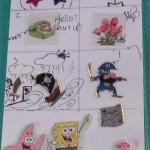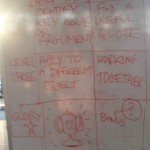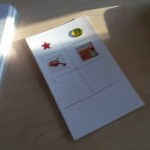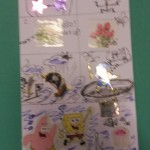All posts by Seth Giddings
what are media?
introductory lecture, October 2015
Digital presentations: slides and video advice
ethnography reading
Ethnography of media production
Ganti, Tejaswini (2014). The value of ethnography. Media Industries 1(1). Online at: http://www.mediaindustriesjournal.org/index.php/mij/article/view/21/59
Experimental ethnography of game culture
Giddings, Seth (2011). Mini-games, monsters and Mr Happy: a video essay on virtual and actual play. Audiovisual thinking: the journal of academic videos. Issue 3. Online at: http://www.audiovisualthinking.org/videos/mrhappy/
social media workshops
most of the workshop videos can be found through the WSAgmm Tagboard: https://tagboard.com/WSAGMM/247432
Why not look at my media moment?
Seth’s media moment
Sonic the Hedgehog released in US, 1991
using images
Work (play) shop: microethnography
some of my field notes / materials and further resources:
sound, memory, sensory ethnography:
http://www.bbc.co.uk/programmes/p01rr9hg
“…the sound and incredible feeling on fingers & palms from raking through a full drawer of pieces; doing so when someone else (friend or parent) was doing the same thing, in the same pile, and getting into occasional ‘turf wars’ (“you look on that side, I’ll look on this side”, as if pieces obey those demarcations); using my teeth to pull pieces apart (I preferred the occasional bloody gum to chipped & hang nails); dumping all the pieces of a new set on the ground; stepping on pieces; other people stepping on pieces; building on a hard table and having pieces drop off to skitter along the floor; the anxiety & relief of anticipating a missing piece in a new set, and then finding out that they’re all there. —(M)” (quoted in Wolf (ed.) 2014, 255-6).
Imagination and the fantastical:
“most of the worlds and other creations discussed in detail in the recollections and observations gathered here are characterized by a profoundly unrealistic aesthetic and performative sensibility. From a distance they are familiar and mundane —buildings, cities, vehicles— but close up, and in the flow of play, they reveal a fantastical and nonsensical dynamism. Already we have encountered cities of roofless buildings, a mathematical dinosaur, stacks that are at once trains and robots, and the transformation of a medieval castle into an SF palace, as well as syncretic worlds of LEGO, Playmobil, and domestic objects. The anthropologist of play Brian Sutton-Smith has called for a greater acknowledgement of the role of phantasmagoria —nonsense, obscenity, and figurative violence— in children’s imaginative play, noting that children’s own stories ‘portray a world of great flux, anarchy and disaster often without resolution’ and with ‘a preference for rhyme and alliteration’, and characterized by nonsense, obscenity, and ‘crazy titles, morals, and characters’[i].
[i] Sutton-Smith, Brian. 1997. The Ambiguity of Play. Cambridge MA: Harvard University Press, 161
In Wolf (ed.) 2014: 261
further reading:
Kline, Stephen. 1993. Out of the Garden: toys, TV, and children’s culture in the age of marketing. London: Verso.
Pink, Sarah 2009. Doing Sensory Ethnography. London: Sage.
Wolf, Mark J.P. (ed.) 2014. Lego Studies: examining the building blocks of a transmedial phenomenon, New York: Routledge.
From gamification to critical play: the media management of behaviour
images from the ‘gamified scholarship’ seminar:
reading:
Foxman, Maxwell 2014.‘How to Win Foursquare: body and space in a gamified world’. In Mathias Fuchs, Sonia Fizek, Paolo Ruffino & Niklas Schrape (eds) Rethinking Gamification, Luneberg: meson press, pp.71-90.
Ian Bogost 2011 ‘Gamification is bullshit‘
further reading:
Bogost, Ian 2010. Persuasive Games: the expressive power of videogames. Cambridge MA: MIT Press.
Flanagan, Mary 2009. Critical Play: radical game design. Cambridge MA: MIT Press. Introduction here: http://mitpress.mit.edu/sites/default/files/titles/content/9780262062688_sch_0001.pdf
Fuchs, Mathias, Fizek, Sonia, Ruffino, Paolo & Schrape, Niklas (eds) 2014. Rethinking Gamification. Amsterdam: meson press. Also online: http://projects.digital-cultures.net/meson-press/files/2014/06/9783957960016-rethinking-gamification.pdf
MacGonigal, Jane 2011. Reality is Broken: how games make us better and how they can change the world. Penguin.
In search of the mobile audience
reading for the seminar (and for next week): Foxman, Maxwell 2014. ‘How to Win Foursquare: body and space in a gamified world’. In Mathias Fuchs, Sonia Fizek, Paolo Ruffino & Niklas Schrape (eds) Rethinking Gamification, Luneberg: meson press, pp.71-90.




